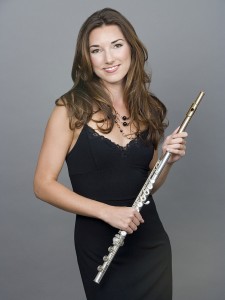UTAH SYMPHONY, Abravanel Hall, April 10; second performance 8 p.m. April 11, tickets at 801-355-2787, 888-451-2787 or www.utahsymphony.org
Mercedes Smith is the belle of the ball at this weekend’s Utah Symphony concerts. Two of the works on the program — Claude Debussy’s Prélude à l’après-midi d’un faune and Maurice Ravel’s Daphnis et Chloé— feature the flute prominently and Smith, the orchestra’s principal, played both magnificently.
She is an exquisite player, infusing the main theme of the Prélude with poetic elegance and sensitive lyricism. Smith took the opening solo languidly, which emphasized the sultry character of the music perfectly. She set the tone for the entire piece with her beautifully crafted playing and expressions. Conductor Thierry Fischer took it up and let the orchestra convey the seductiveness of the piece with his relaxed tempos and nuanced direction. It was a finely crafted reading on all accounts.
Smith once again captured the exquisitely sensual writing for her instrument in Daphnis et Chloé, particularly in the “Pantomime” scene, which in effect is a long flute solo. She played with finely molded phrasings and eloquently expressed lyricism.
Fischer programmed the entire ballet score, which in its remarkably powerful orchestration is a tour de force work for the entire ensemble. And they, along with the Utah Symphony Chorus, once again delivered the goods, playing with vitality, boldness, tender lyricism and nuanced expressions.
The many solos throughout the hour-long work spotlighted a number of players; notable among them were concertmaster Ralph Matson’s playing as well as English hornist Lissa Stolz’s contributions.
Also on the program is Igor Stravinsky’s Symphony in Three Movements. One of his best works from his later period, the symphony makes a powerful statement that undoubtedly reflects the time in which it was written (the middle of World War II). Fischer’s well conceived interpretation captured the intensity of the outer movements, the music of which is characterized by strongly accented phrasings and jarring harmonies. The slower middle movement, on the other hand, offers some contrast, but it, too, is somewhat unnerving in its effect.
The orchestra played the symphony spectacularly, with crisp articulation and precisely executed delivery that conveyed the power of the work.

